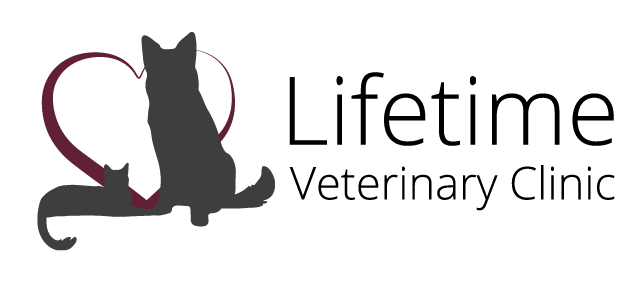Cheyletiellosis in Dogs
What is cheyletiellosis?
 Cheyletiellosis is an uncommon but highly contagious skin parasite of dogs, cats, humans, and rabbits, caused by Cheyletiella mites. It is also referred to as “walking dandruff” due to the appearance of the large, whitish mites as they crawl across skin and fur, and the excessive scaling that accompanies the infection. Cheyletiellosis has become rare due to improved flea control medications.
Cheyletiellosis is an uncommon but highly contagious skin parasite of dogs, cats, humans, and rabbits, caused by Cheyletiella mites. It is also referred to as “walking dandruff” due to the appearance of the large, whitish mites as they crawl across skin and fur, and the excessive scaling that accompanies the infection. Cheyletiellosis has become rare due to improved flea control medications.
What are the clinical signs of cheyletiellosis?
The most important clinical sign of cheyletiellosis is scaling or dandruff. The skin scales are widespread and often appear as large flakes. They are most commonly seen on the back and upper part of the body. Itching may also occur to a variable degree.
How does a dog become infected with cheyletiellosis?
Most dogs contract cheyletiellosis from other pets at animal shelters, breeders, groomers, or other areas where numerous dogs have contact with one another.
How is cheyletiellosis diagnosed?
Diagnosis is based on medical history, clinical signs, and observation of the mite. Due to the large size of the skin mite, it is easily seen under a microscope set on low magnification.
How is cheyletiellosis treated?
Cheyletiella mites are susceptible to most topical insecticides. A variety of topical treatments are available from your veterinarian for the treatment of cheyletiellosis. Most pets require 3–4 medicated baths, given once a week, to remove the scales and mites. Lime-sulfur rinses are commonly used in cats, kittens, puppies and rabbits. Pyrethrins or organophosphates may be used in adult dogs.
Routine flea sprays and powders are rarely effective. Alternative treatments may be recommended by your veterinarian, such as selamectin (Revolution®), milbemycin (Milbemax®), fipronil (Frontline®), imidacloprid (Advantus®), moxidectin (Advantage Multi®), or ivermectin. These drugs, though often effective and commonly used, are not FDA-approved for use in the treatment of cheyletiellosis (they are used off label). Your veterinarian may require you to sign a disclosure and informed consent form before using them.
To eliminate this parasite, it is important to thoroughly clean all bedding and surfaces that an infected pet has had contact with. Recurrent infections indicate contact with an infected carrier (some of which may have no clinical signs) or an unidentified source of mites, such as untreated bedding. For this reason, all pets in the house must be treated at the same time.
Can I get cheyletiellosis from my pet?
You can get cheyletiellosis from an infected pet. The infection is self-limiting, since you are an accidental host. Complete resolution occurs within three weeks after your pet and the environment have been treated.
What is the prognosis for cheyletiellosis?
Cheyletiellosis has an excellent prognosis for complete resolution provided you follow your veterinarian's treatment recommendations.
© Copyright 2025 LifeLearn Inc. Used and/or modified with permission under license. This content written by LifeLearn Animal Health (LifeLearn Inc.) is licensed to this practice for the personal use of our clients. Any copying, printing or further distribution is prohibited without the express written consent of LifeLearn. This content does not contain all available information for any referenced medications and has not been reviewed by the FDA Center for Veterinary Medicine, or Health Canada Veterinary Drugs Directorate. This content may help answer commonly asked questions, but is not a substitute for medical advice, or a proper consultation and/or clinical examination of your pet by a veterinarian. Please contact your veterinarian if you have any questions or concerns about your pet’s health. Last updated on Jun 18, 2025.

